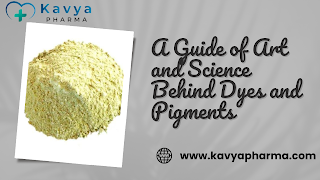Introduction
In the vibrant world of colors, dyes and pigments play a pivotal role in transforming everyday objects into captivating masterpieces. As a prominent manufacturer, exporter, and supplier of dyes and pigments, we delve into the fascinating realm of these colorants, exploring their history, science, and diverse applications. Join us on this journey to uncover the secrets behind these essential components of our colorful world.
The Evolution of Dyes and Pigments
The origin of dyes and pigments can be traced back to ancient civilizations, where natural materials like plants, minerals, and insects were used to impart color to fabrics, ceramics, and artworks. Over time, civilizations perfected the art of dyeing, with ancient Egypt and India leading the way. The advent of synthetic dyes in the 19th century revolutionized the industry, providing a wide array of vibrant, long-lasting colors that sparked the textile and art renaissance.
The Difference Between Dyes and Pigments
While dyes and pigments both add color to various materials, they differ in their behavior and application. Dyes are soluble colorants that penetrate the substrate, such as fabric or paper, resulting in a vivid and uniform hue. On the other hand, pigments are insoluble particles that remain on the surface of the material, offering opacity and vibrancy. Understanding this difference is crucial for choosing the right colorant for specific applications.
The Science Behind Color Creation
The science of color is a captivating blend of chemistry and physics. Chromophores, the color-causing components, determine the hues of dyes and pigments. Their molecular structure dictates which wavelengths of light are absorbed and reflected, leading to the perception of colors. Manufacturers use this knowledge to engineer colorants with specific properties, allowing for an extensive palette that captivates the human eye.
Types of Dyes
Dyes can be categorized based on their source and application. Natural dyes are derived from plant, animal, or mineral sources and are valued for their eco-friendliness and unique hues. Synthetic dyes, manufactured through chemical processes, offer a broader spectrum of colors and enhanced stability. Reactive dyes bond directly with the substrate, making them ideal for textiles, while acid dyes excel in dyeing protein-based materials like wool and silk.
Types of Pigments
Pigments are equally diverse, divided into inorganic and organic categories. Inorganic pigments, derived from minerals, provide high lightfastness and opacity, making them suitable for architectural coatings and plastics. Organic pigments, based on carbon-containing compounds, offer a vast range of shades and are commonly used in paints, inks, and plastics.
Applications in Textiles and Fashion
In the textile industry, dyes are indispensable, bringing life to fabrics, garments, and accessories. Manufacturers employ various dyeing techniques like vat dyeing, tie-dye, and digital printing to achieve stunning results. From vibrant summer dresses to elegant silk sarees, dyes enable fashion designers to weave colorful stories that express creativity and style.
Contributions to Art and Creativity
Artists have relied on dyes and pigments for centuries to express their creativity on canvas and other surfaces. The works of famous artists like Van Gogh, Monet, and Picasso would not have been possible without these colorants. Today, contemporary artists experiment with new pigments and mixed media, pushing the boundaries of artistic expression.
Advancements in Environmental Sustainability
In recent years, the dyes and pigments industry has witnessed a growing focus on environmental sustainability. Manufacturers are adopting eco-friendly practices, such as water-based pigments, natural dyes, and biodegradable colorants, to minimize their ecological footprint. These efforts are essential in preserving our planet for future generations while maintaining the beauty of colors in our lives.
Quality Standards and Certifications
Reliable manufacturers, exporters, and suppliers of dyes and pigments adhere to strict quality standards and certifications. Compliance with regulations ensures that the products meet safety and environmental requirements, providing customers with the assurance of using high-quality colorants in their applications.
Conclusion
As we conclude our journey through the captivating world of dyes and pigments, we appreciate the indispensable role they play in adding vibrancy and charm to our lives. From the ancient art of dyeing to the modern techniques of color creation, these colorants continue to inspire creativity and enhance various industries worldwide. As a distinguished manufacturer, exporter, and supplier of dyes and pigments, we remain committed to delivering excellence and contributing to a colorful and sustainable future.

Comments
Post a Comment